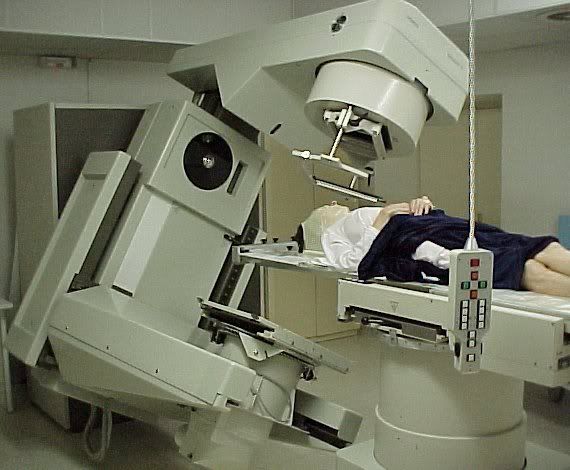Cancer-related anaemia and fatigue: assessment and treatment.
SUCCESSFUL MANAGEMENT of anaemia in cancer patients requires an accurate, quantitative definition of anaemia. However, to fully understand the reality of living with cancer-related anaemia and optimise supportive care, it is also important to understand the condition from the patient's perspective.
Anaemia is an imbalance between the production and destruction-or loss - of red blood cells, leading to decreased red blood cell count, haemoglobin content and oxygen-carrying capacity of the blood. It can be defined further by graded classification systems, haemoglobin trigger values, tumour type and symptoms. Various classification systems are used to grade the severity of anaemia, from mild to life-threatening, on the basis of haemoglobin concentrations. Anaemia is a complex condition that affects the central nervous, gastrointestinal, vascular and cardiorespiratory systems as well as the genital tract. The multifactorial nature of anaemia provides the healthcare professional with an interesting challenge in terms of diagnosis, treatment and symptom management.
Anaemia in cancer patients
Approximately 20 to 60 per cent of cancer patients have anaemia at presentation and several factors may induce or exacerbate the condition, influencing incidence rates in specific patient groups. These factors include tumour type, disease stage, duration, intensity and type of treatment, and patient age.
Despite the high incidence of cancer-related anaemia, it is frequently under-diagnosed and under-treated. The European Cancer Anaemia Survey was conducted to prospectively evaluate the prevalence, incidence and treatment of anaemia (haemoglobin less than 12.0g/dL) in European cancer patients (n = 15,367), including the relationship of mild, moderate and severe anaemia to performance status (for example, the patient's physical state and prognosis after therapeutic intervention). Patients were evaluated for up to six months. Anaemia prevalence and incidence in cancer patients were high and anaemia was significantly correlated with poor performance status. Anaemia was treated in only 38.9 per cent of patients. This may reflect an under-appreciation of the seriousness of anaemia and its impact on the patient, as well as practical difficulties in diagnosing often vague, emotional and psychological symptoms.
Causes of anaemia
The causes of anaemia in patients with cancer fall into three categories:
--Anaemia that occurs as a result of the malignancy.
--Anaemia attributed to the cancer therapy.
--Anaemia caused as a result of other contributing factors such as infections, nutritional deficiencies and underlying chronic disorders in addition to cancer.
Anaemia of chronic disease Anaemia of chronic disease, in the absence of any treatment-related factors, is not fully understood, but it is represented by usually mild (greater than 9g/dL) normochromic or hypochromic anaemia with a disproportionately low reticulocyte count relative to the severity of anaemia.
Red blood cell survival is shortened, possibly because of the action of immune and inflammatory cytokines activated by the presence of the tumour. An imbalance develops between red blood cell production and depletion, as a result of the inability of the bone marrow to produce red blood cells at a rate sufficient to compensate for their reduced life span. This is thought to reflect the suppression of erythroid progenitor cells, impaired iron use and inadequate production of endogenous erythropoietin by the underlying malignancy.
Other disease-related factors include direct bone marrow involvement of the malignancy, haemolysis, blood loss associated with the tumour, renal insufficiency and hypersplenism.
Treatment-related anaemia The extent to which treatment for cancer can induce or exacerbate anaemia varies considerably according to the type of tumour and the treatment administered. Myelosuppressive, cytotoxic chemotherapy or radiotherapy that involves large areas of bone marrow will compromise bone marrow function such that the production and maturation of red blood cells are reduced and anaemia follows. As the kidney is a primary site of endogenous erythropoietin production, nephrotoxic drugs, including cisplatin based chemotherapy, may decrease the production of erythropoietin via drug-induced renal tubular damage.
Anaemia caused as a result of other contributing factors Other possible treatment-related causes of anaemia include long-term damage to the stem cell pool or nutritional deficiencies as a result of radiotherapy, and blood loss during extensive surgery.
Fatigue
Fatigue is the most commonly reported clinical manifestation of anaemia in cancer patients, with 78 per cent of patients experiencing symptoms. Haemoglobin concentration has been shown to have a considerable impact on the incidence of fatigue and subsequently on quality of life. In a study of 50 patients with solid tumours or haematological malignancies, those with haemoglobin levels of less than or equal to 12g/dL reported significantly more fatigue, worse physical and functional wellbeing and generally reduced quality of life than those who had haemoglobin of greater than or equal to 12g/dL.
The relationship between haemoglobin concentration and quality of life changes was further defined in a retrospective analysis of data from two community studies that enrolled 4,382 anaemic cancer patients receiving chemotherapy. In these patients, the maximum quality of life gain was in those whose haemoglobin concentration was increased to 12g/dL (range 11-13g/dL).
Patients, rather than physicians, provide the best documentation of fatigue. Data from a survey of 419 cancer patients reiterated the negative impact and wide range of effects that fatigue has on daily life. Sixty one per cent of patients reported that fatigue adversely affected their ability to work, ability to enjoy life in the moment, intimacy with a partner and physical and emotional wellbeing. However, fatigue remains poorly understood and patients and oncologists differ in their perception of the importance of treating fatigue. When asked which factors affected their every day life the most, 60 per cent of patients ranked fatigue highest, followed by nausea (22 per cent), depression (10 per cent) and pain (6 per cent). Interestingly, 41 per cent of patients considered the reduction of fatigue more important than pain reduction (34 per cent), whereas oncologists felt that it was more important to reduce and/or relieve pain (94 per cent) than fatigue (5 per cent)
Assessment
The assessment of cancer-related anaemia is based primarily on quantitative measures of haematocrit or haemoglobin, with considerably less emphasis on patient symptoms, changes in function or quality of life. Furthermore, rather than long-term monitoring of patients' symptoms alongside these quantitative indicators to establish trends, considerable reliance is placed on single measures. Anaemia is often therefore considered in a single dimension and the symptoms that most directly affect patients' lives, such as fatigue, are not fully evaluated. However, cancer-related fatigue has now been accepted as a diagnosis in the 10th revision of the International Classification of Diseases and an algorithm has been proposed for its evaluation and management. Assessment of cancer-related fatigue has also been aided by the creation of a defined list of diagnostic criteria.
A variety of tools are available to assess cancer-related fatigue. In the clinical setting, where there is limited time for detailed evaluation, assessment may be performed by asking simple questions such as: 'Are you experiencing any fatigue?' and 'How severe has your fatigue been during the past week on a scale of 1 to 10?'
However, multidimensional questionnaires provide further information on the patient's symptoms and are more commonly used in the research setting. The Piper Fatigue Scale is an early example of a validated multidimensional instrument that uses a 41-item questionnaire to evaluate severity, distress and the impact of fatigue in patients receiving radiotherapy, although it may also be used in other patient groups. The Functional Assessment of Cancer Therapy-General (FACT-G) scale is a 33-item scale developed to measure quality of life in patients undergoing cancer treatment. FACT-G has been supplemented by the addition of fatigue and anaemia-specific subscales; the FACT-Fatigue (FACT-F) subscale uses the core FACT-G with 13 additional items, while the FACT-Anemia (FACT-An) subscale uses seven items in addition to those of the FACT-F.
Multidimensional fatigue assessment tools, although valuable in the research setting, are time consuming and consequently may be used inconsistently. This highlights the need for the development of a more suitable assessment method, which is compatible with the reality of healthcare assessment in European hospitals. An ideal assessment tool would consist of a minimum number of questions required to reach an accurate diagnosis and evaluation of fatigue. An accurate assessment of the level of fatigue would allow healthcare professionals to provide patients with an explanation for their symptoms and to relate fatigue to disease, treatment or other concomitant conditions, for example, anaemia, metabolic disturbances and pain.
Treatment
Red blood cell transfusions have historically been the cornerstone of management for severe cancer-related anaemia because they rapidly raise the red blood cell count and haemoglobin concentration. However, the benefits of red blood cell transfusions are transient and potential risks include infection, haemolytic reactions and transfusion-related lung injury. Further, a UK audit of 2,719 cancer patients receiving chemotherapy revealed that there is no consensus between different clinical centres regarding the 'transfusion trigger' - the mean haemoglobin concentration at which red blood cell transfusion is implemented - so treatment is not standardised.
The use of the erythropoietic proteins recombinant human erythropoietin (rHuEPO; epoetin alfa, epoetin beta) and darbepoetin alfa is a valuable alternative to red blood cell transfusions. These therapies mimic the role of endogenous erythropoietin and thus aid in the management of anaemia. Data demonstrate that erythropoietic proteins increase haemoglobin levels, improve quality of life and reduce red blood cell transfusion requirements in anaemic cancer patients receiving or not receiving chemotherapy.
In a randomised, double-blind study of 375 anaemic cancer patients receiving non-platinum chemotherapy, 359 of whom were analysed for efficacy, treatment with epoetin alfa 150IU/kg three times per week for up to 28 weeks produced significantly greater increases in haemoglobin concentration and haemoglobin response rate (an increase in haemoglobin of greater than or equal to 2g/dL in the absence of red blood cell transfusion) than placebo. Significantly greater improvements in all primary cancer and anaemia-specific quality of life domains including fatigue as measured by the FACT-F subscale were noted with epoetin alfa compared with placebo. There was also a statistically significant correlation between change in haemoglobin level and all primary quality of life parameters including fatigue.
Similarly, in a randomised trial in 343 anaemic patients receiving chemotherapy for haematological malignancies, treatment with epoetin beta 150IU/kg three times per week for up to 16 weeks resulted in significantly higher haemoglobin response rates than placebo (67 per cent versus 27 per cent). However, when the impact of epoetin beta on quality of life was assessed, no statistically significant differences were found on the FACT-F and FACT-An subscales compared with placebo. When the subpopulations of responders and non-responders to epoetin beta were further analysed, statistically significant differences were seen in favour of the responders group for the overall FACT-An quality of life and FACT-F subscale scores.
Darbepoetin alfa, a newer erythropoietic agent, has an extended half-life compared with epoetin alfa and epoetin beta, as well as increased biological activity allowing for less frequent dosing.
In a double-blind, randomised, placebo-controlled study of 314 anaemic lung cancer patients receiving platinum chemotherapy, patients who received darbepoetin alfa 2.25 µg/kg once per week for up to 12 weeks had a significantly greater haematopoietic response rate (an increase in haemoglobin of greater than or equal to 2g/dL, or a haemoglobin concentration of greater than or equal to 12g/dL in the absence of red blood cell transfusion; 66 per cent versus 24 per cent) than the placebo group. Darbepoetin alfa also resulted in a greater improvement in FACT-F scores compared with placebo.
Similar results were reported for 344 patients receiving darbepoetin alfa for up to 12 weeks during concurrent chemotherapy for lymphoproliferative malignancies. The haematopoietic response rate was 65 per cent with darbepoetin alfa and 24 per cent with placebo. Furthermore, the mean increase in the FACT-F subscale score from baseline was significantly greater for darbepoetin alfa than for placebo. Ongoing studies are investigating the feasibility of administering darbepoetin alfa at less frequent dosing intervals of once every two weeks and once every three weeks.
Increasing evidence suggests that anaemia adversely affects survival in patients with cancer. In a systematic review of 60 articles reporting the survival of cancer patients in relation to anaemia and haemoglobin concentration, Caro et al (2001) reported a 65 per cent increase in the relative risk of death for anaemic patients. Similarly, in patients with chronic lymphocytic leukaemia, anaemia and thrombocytopenia at diagnosis were strongly indicative of poor outcomes. Anaemia at diagnosis has been reported as an independent adverse prognostic factor in patients with Hodgkin's disease or non-Hodgkin's lymphoma.
Whether increasing haemoglobin concentrations could have a positive effect on outcome is a matter of ongoing debate. A link has been made between increased serum haemoglobin concentration and improved survival and quality of life in cancer patients. In the study by Littlewood and colleagues, a trend towards increased survival was observed in patients receiving rHuEPO versus placebo; the 12-month estimates of survival were 60 per cent and 49 per cent respectively. These data should be interpreted with extreme caution, because this study was not designed to address survival.
Recently, a randomised, placebo-controlled study of 939 patients receiving chemotherapy for metastatic breast cancer was terminated early due to higher mortality in the epoetin alfa arm than in the placebo arm of the study at 12 months. However, the authors remarked that the study had problems in design, conduct and post-trial analysis.
Another study of 351 patients with head and neck cancer receiving radiotherapy and epoetin beta 300IU/kg three times per week reported poorer tumour outcomes and survival than those receiving placebo.
Again, these data must be regarded with caution because more than 30 per cent of patients did not receive radiotherapy per protocol and a further 8 per cent had major protocol violations. Furthermore, when data were analysed for the group of patients who did receive radiotherapy per protocol, no statistically significant differences in disease progression or survival endpoints were seen. It should also be noted that both of these studies are inconsistent with the previous literature on these agents, and used higher baseline and target haemoglobin concentrations than those approved on label or in evidence-based guidelines and both used off-label doses of rHuEPO.
While several studies have demonstrated increased haemoglobin levels, improved quality of life and reduced red blood cell transfusion requirements in anaemic cancer patients following erythropoietic protein therapy, prospectively designed, longterm studies are required to evaluate the impact of erythropoietic proteins on survival. A number of studies are currently addressing this question.
The role of the oncology nurse
Oncology nurses are pivotal caregivers and have expert knowledge of the day-to-day responses of patients. They are ideally positioned to play a key role in the identification and management of cancer-related anaemia and to act as patient advocates. Oncology nurses should proactively and accurately assess cancer-related anaemia and fatigue using appropriate tools, and ensure that the information is documented and made available to the rest of the healthcare team. In addition, oncology nurses should:
--Continuously assess and monitor patients.
--Aim to identify signs and symptoms of anaemia early.
--Realise that anaemia is more than a low haemoglobin level. Anaemia is a frequent finding in cancer patients and should be assessed carefully. Additional causes of anaemia such as iron deficiency, bleeding, nutritional defects or haemolysis should be corrected before starting erythropoietic protein therapy.
--Evaluate trends in blood profiles over time.
--Use evidence-based models to identify patients at risk of developing anaemia.
--Implement strategies to prevent and/or reduce the incidence of anaemia.
By accurately anticipating and assessing problems at all stages of treatment, the oncology nurse can be pivotal in reducing the adverse effects of cancer-related anaemia and fatigue. However, to achieve this, oncology nurses' training needs must be addressed and education on anaemia and fatigue provided. The European Oncology Nursing Society (EONS), in conjunction with Amgen (Europe), have conducted a learning needs assessment study in 21 countries involving more than 450 nurses. The main objective of this study was to identify European oncology nurses' learning requirements relating to anaemia, neutropenia and mucositis. Results of this study have been used to develop the Training Initiative in Thrombocytopenia, Anaemia and Neutropenia (TITAN) training programme that is being piloted in Ireland, France and the Netherlands with results expected later this year. The delivery of accurate training programmes specifically tailored for European oncology nurses should improve the prevention, detection and management of haematological toxicities, including anaemia and fatigue, in cancer patients.
Conclusion
Although common in patients with cancer, anaemia is often under-diagnosed and undertreated. Fatigue, which is frequently associated with cancer-related anaemia, has a significant impact on patients' everyday lives. However, the effects of cancer-related fatigue are not fully appreciated by healthcare professionals. Many patients regard the treatment of fatigue as more important than the treatment of pain, in direct contrast with the opinions of many physicians. Accurate assessment of anaemia and fatigue is essential to understand the reality of living with cancer-related anaemia and provide optimal treatment.
Oncology nurses are ideally placed to act as patient advocates and to play a key role in the identification and management of cancer-related anaemia by anticipating and assessing the problem during all stages of treatment. However, cancer-related anaemia is a complex condition with diverse symptoms. Further education on anaemia and fatigue is therefore required and 'needs analyses' for patients and nurses have been conducted in Europe. It is hoped that accurate and detailed training programmes, developed from specific needs analyses, will further enhance the role of oncology nurses




0 Comments:
Post a Comment
<< Home